Colossi of Memnon
two massive stone statues of Pharaoh Amenhotep III
On the western bank of the Nile, where the desert meets the fertile land, two large statues stand like silent watchers. These statues, called the Colossi of Memnon, represent Pharaoh Amenhotep III and have been here for over 3,400 years. They have survived floods, earthquakes, and the changing sands of time. For visitors to Luxor, known as the world’s greatest open-air museum, the Colossi are more than just statues. They tell stories, protect Thebes, and symbolize Egypt’s golden age.
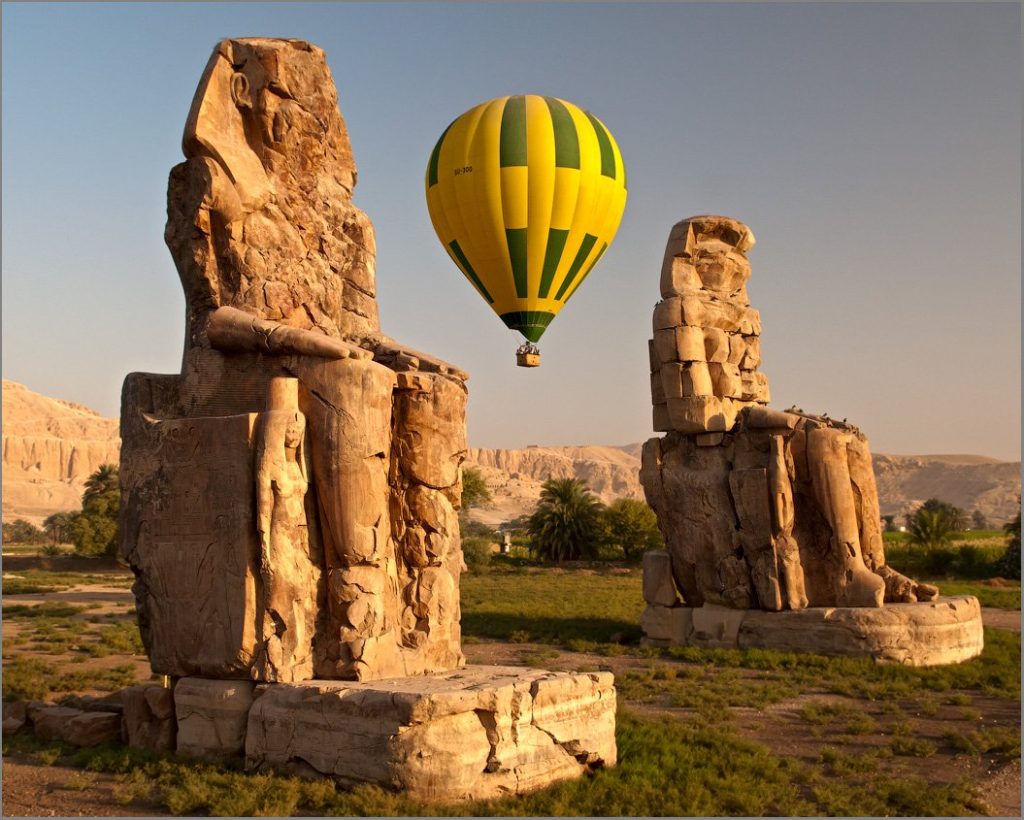
Amenhotep III’s Vision: A Temple Fit for a God
The Colossi were built around 1350 BCE during the reign of Amenhotep III, a powerful pharaoh of the 18th Dynasty. His rule was a time of wealth, art, and grand building projects. To honor his status as a god and ensure people remember him, Amenhotep ordered a large mortuary temple on the Theban West Bank.
This temple was the biggest in Thebes, even larger than Karnak. It served as a place of worship and as a sign of Amenhotep’s power and connection to the gods. The Colossi, which stand at the temple’s entrance, were meant to impress visitors and show that Amenhotep would always be present.
Today, the temple has largely disappeared due to the effects of numerous years of Nile floods, earthquakes, and stone mining. However, the Colossi still stand—two giants that refuse to be forgotten.
Luxor Tours & Activities
Looking to save some costs on your travel? Why not join a shared group tour to explore Luxor, Egypt? Here are some activities you might be interested in:
The Location of Colossi of Memnon
Monumental Craftsmanship: How the Colossi Were Built
The Colossi are huge statues, each standing about 18 meters (60 feet) tall and weighing around 720 tons. They are amazing examples of ancient engineering.
These statues are made from quartzite sandstone that was quarried near modern Cairo, which is over 700 kilometers away. Moving such large blocks over this distance was a great challenge.
Each statue depicts Amenhotep III seated on a throne, his hands resting on his knees, gazing east towards the rising sun. The thrones have carvings of Hapi, the Nile god, which symbolize fertility and abundance. Smaller figures of his wife, Queen Tiye, and his mother, Mutemwiya, highlight the importance of family and continuity in the dynasty.
Even though they have weathered over time, the statues still convey a sense of power. Their size and details remind us that they were not just works of art—they also represented political and spiritual messages carved in stone.

The Legend of the “Singing Colossus”
One interesting part of the Colossi is the story of the “Singing Colossus.” After an earthquake in 27 BCE cracked the northern statue, people began to hear strange sounds at dawn. The statue seemed to hum or whistle as the morning sun warmed the stone.
Ancient travelers, like the historian Strabo and Emperor Hadrian, wrote about this phenomenon. They thought the sound was the voice of Memnon, a mythical Ethiopian king and son of Eos, the goddess of dawn.
Many pilgrims traveled long distances to hear the statue “sing,” and poets wrote about their experiences. This connection with Memnon gave the statues their modern name: the Colossi of Memnon.
Today, scholars believe the sound came from the quick heating of dew-soaked stone, which created vibrations. Interestingly, this phenomenon stopped after Roman repairs in the 2nd century CE.
This mix of natural science and mythology made the Colossi even more appealing, linking them to Egyptian, Greek, and Roman cultures.

The Lost Temple of Amenhotep III
The Colossi still stand, but the mortuary temple they once protected has mostly vanished. At its height, this temple was the largest in Thebes, filled with courtyards, sanctuaries, and huge statues. Over time, it fell apart due to a few reasons:
– Flooding: Being near the Nile made it prone to yearly floods.
– Earthquakes: Natural disasters damaged the structure.
– Stone Recycling: Later pharaohs, like Ramses II, took the stones to build their own monuments.
Today, ongoing excavations are uncovering bits of statues, sphinxes, and reliefs. These findings give us exciting hints about the temple’s past glory. Archaeologists think it was once as impressive as Karnak—a lost wonder of the ancient world.
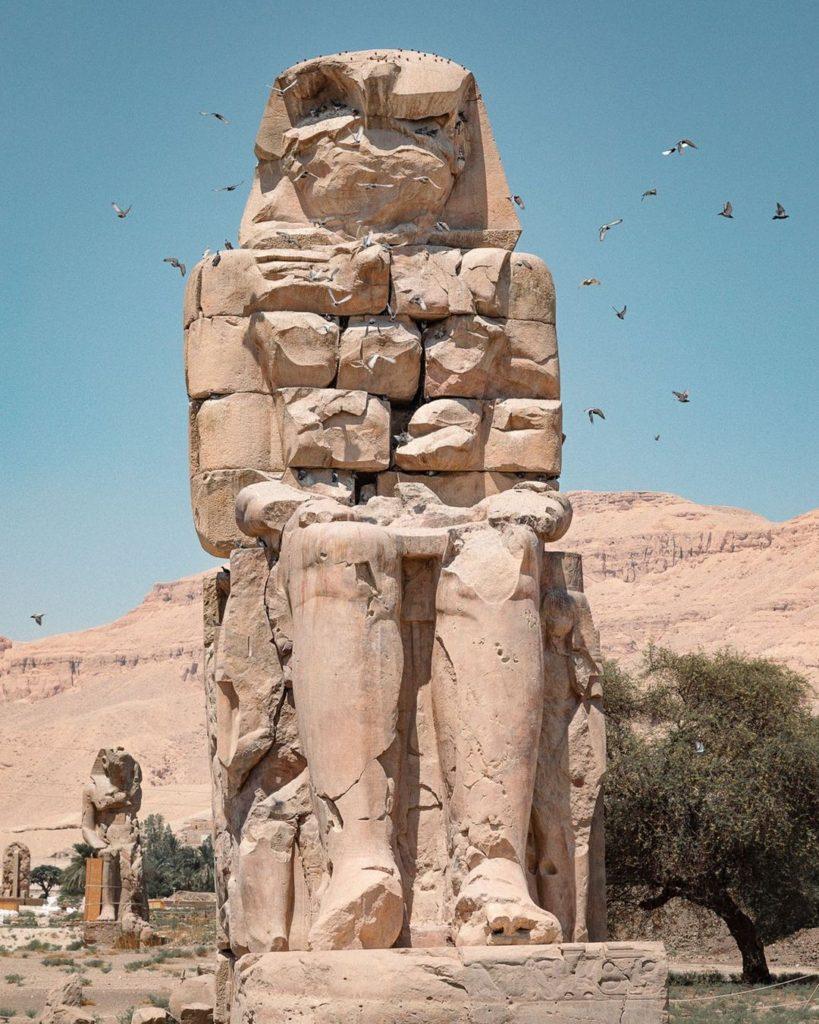
Rediscovery and Preservation
The Colossi of Memnon have never truly disappeared; they are too large to forget. European travelers in the 18th and 19th centuries admired them, making sketches and writing about their great size. Today, archaeologists and conservationists work diligently to protect the statues and excavate the remains of Amenhotep III’s temple.
The Colossi of Memnon and Amenhotep III Temple Conservation Project has found hundreds of statues and artifacts. These discoveries help to tell the story of this lost complex. Their work ensures that the Colossi will stand for future generations, not just as old relics but as important symbols of Egypt’s heritage.
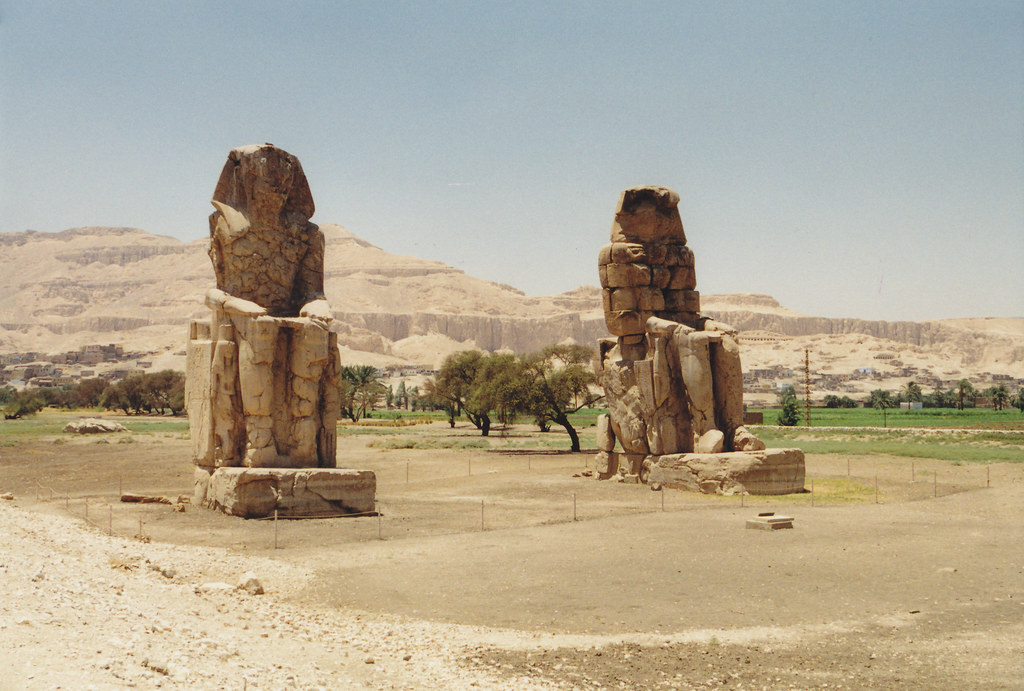
Visiting the Colossi of Memnon Today
For modern travelers, the Colossi are among the most accessible and rewarding sites in Luxor.
- Location: They stand on the West Bank of Luxor, just a short drive from the Valley of the Kings and Hatshepsut’s Temple.
- Accessibility: The site is open-air and free to visit, making it a popular stop on West Bank tours.
- Best Time to Visit: Early morning offers the most atmospheric light and fewer crowds. Sunset also casts a golden glow that enhances photography.
- Nearby Attractions: Combine your visit with Medinet Habu, the Ramesseum, and the Valley of the Queens for a full day of exploration.
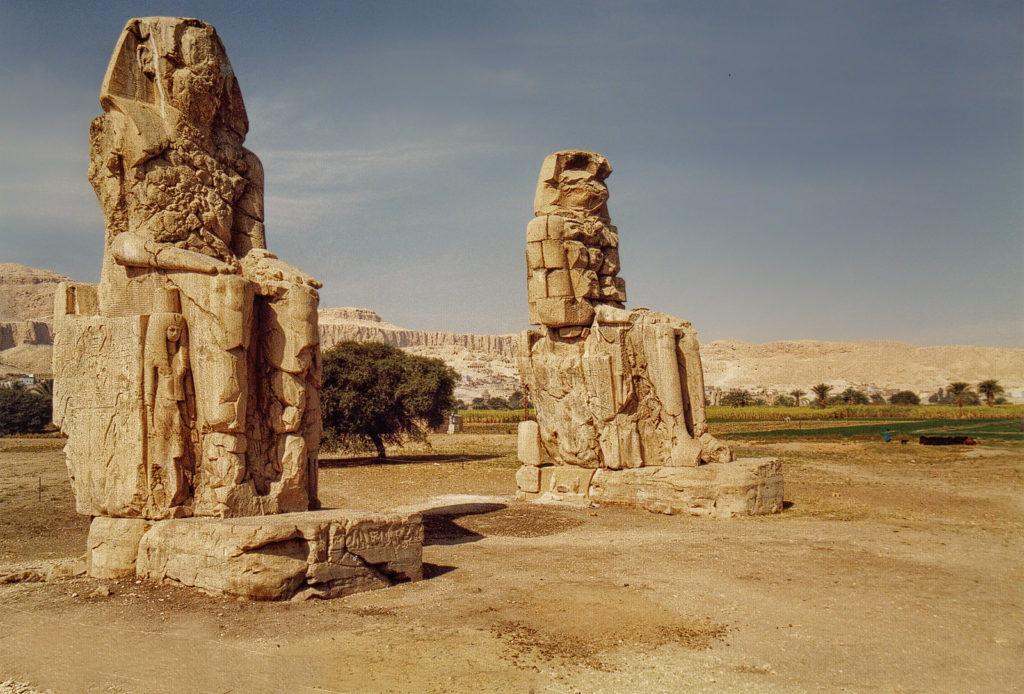
Practical Travel Tips
To make the most of your visit, keep these tips in mind:
- Getting There: Taxis and private drivers are the easiest options. Many organized tours include the Colossi as part of a West Bank package.
- Opening Hours: The site is open all day, as it is not enclosed or ticketed.
- Entry Fees: Free of charge, making it one of Luxor’s most budget-friendly attractions.
- Photography: Arrive at sunrise or sunset for the best lighting. Wide-angle shots capture the statues’ scale, while close-ups highlight their weathered details.
- Combine with Other Sites: Pair your visit with the Valley of the Kings or Hatshepsut’s Temple for a deeper dive into Theban history.

Cultural Significance and Lasting Legacy
The Colossi of Memnon are not just tourist sites; they are important cultural symbols. Their survival shows strength, and their blend of Egyptian, Greek, and Roman stories highlights Egypt’s place as a meeting point for different cultures.
For Egyptians, these statues are a proud reminder of their ancestors’ creativity. For visitors, they provide a unique opportunity to see monuments that have amazed people for thousands of years.
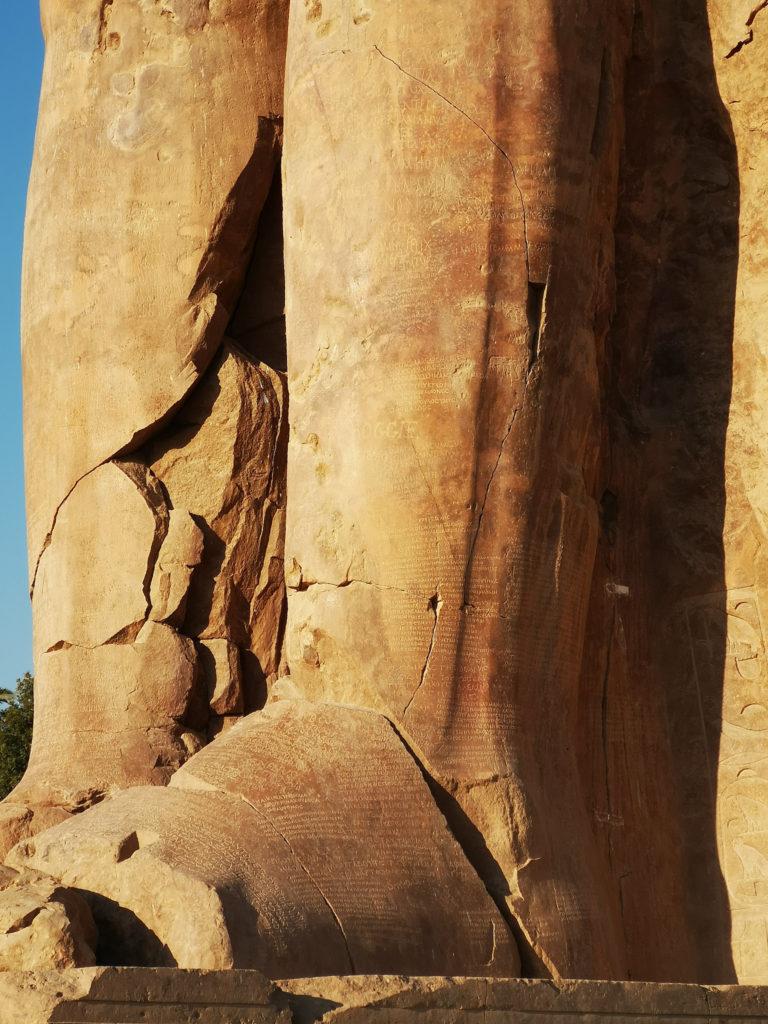
Why the Colossi of Memnon Belong on Every Luxor Itinerary
They may not have the detailed carvings found in Karnak or the Valley of the Kings, but their strength comes from their simple design and size. When you stand before them, you can feel the weight of history and the stories of the past in the stone that has lasted for over three thousand years.
Whether you love history, enjoy photography, or are just exploring, the Colossi of Memnon give you a unique chance to connect with Egypt’s history. They are timeless guardians of Thebes, ready to share their stories with anyone who takes a moment to listen.
Got a Question?
F.A.Qs
The Colossi of Memnon are two massive stone statues of Pharaoh Amenhotep III, built around 1350 BCE. They originally stood at the entrance of his mortuary temple on Luxor’s West Bank.
Each statue is about 18 meters (60 feet) tall and weighs an estimated 720 tons, making them among the largest statues ever built in ancient Egypt.
The name comes from the Greek hero Memnon, a mythical king of Ethiopia who fought in the Trojan War. After one statue began “singing” at dawn following an earthquake, Greeks and Romans associated it with Memnon, son of the dawn goddess Eos.
No. The mysterious sounds were reported in antiquity, likely caused by the heating of dew‑soaked stone at sunrise. After Roman restorations in the 2nd century CE, the phenomenon stopped.
The temple was once the largest in Thebes, but centuries of Nile flooding, earthquakes, and stone quarrying reduced it to ruins. The Colossi are the only major structures still standing.
Did you know that
By purchasing through our links, you support us at no additional cost.
Thank you for your support. ♥️
